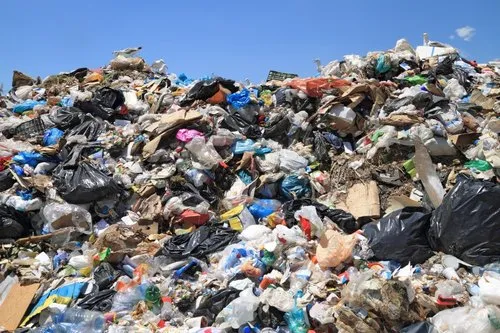Managing non-biodegradable waste is important to protect nature, human life, and ensure a clean, sustainable future.
Non-biodegradable waste refers to materials that do not decompose naturally through the action of microorganisms such as bacteria, fungi, or enzymes. These substances remain in the environment for hundreds or even thousands of years, posing serious threats to ecosystems and human health.
Meaning
In simple terms, non-biodegradable waste means waste that nature cannot break down. Unlike biodegradable materials like food scraps or paper, which turn into compost, non-biodegradable items remain unchanged for a long time. These materials accumulate in landfills, oceans, and soil, leading to pollution and resource depletion.
Non-biodegradable waste is a major by-product of industrialization, consumerism, and urban lifestyles. Plastics, metals, glass, and synthetic chemicals are some of the most common examples.
Examples of Non-Biodegradable Waste
- Plastic Products: Bags, bottles, straws, and packaging materials.
- Metals: Aluminum cans, iron scraps, and tin containers.
- Glass Items: Bottles, mirrors, and glassware that don’t break down easily.
- E-Waste: Old computers, mobile phones, batteries, and circuit boards.
- Synthetic Materials: Nylon, polyester fabrics, and rubber products.
Sources of Non-Biodegradable Waste
- Households: Plastic packaging, broken electronics, cosmetics containers.
- Industries: Chemical waste, metallic components, and industrial by-products.
- Hospitals: Syringes, gloves, and other medical disposables.
- Commercial Spaces: Office electronics, lighting equipment, and vending materials.
Environmental and Health Effects
- Soil Pollution: Non-biodegradable materials, especially plastics, degrade soil quality and block root growth.
- Water Pollution: Plastics and chemicals contaminate rivers and oceans, harming aquatic life.
- Air Pollution: Burning non-biodegradable waste releases toxic gases like dioxins and carbon monoxide.
- Wildlife Threat: Animals often ingest plastic, mistaking it for food, leading to death or injury.
- Human Health Risks: Toxic substances from non-biodegradable waste enter the food chain, causing diseases.
Management and Control Methods
- Reduce: Minimize usage of single-use plastics and synthetic materials.
- Reuse: Encourage creative reuse of containers, bottles, and packaging materials.
- Recycle: Convert waste materials into reusable forms through industrial or domestic recycling.
- Regulation: Implement government policies like plastic bans and e-waste collection systems.
- Education: Promote public awareness campaigns on waste segregation and responsible consumption.
Significance of Managing Non-Biodegradable Waste
Proper management of non-biodegradable waste is essential for environmental sustainability. It helps in conserving natural resources, reducing pollution, and mitigating climate change. Recycling and reusing waste materials also create green jobs and support a circular economy.
By taking conscious steps in daily life — like avoiding plastic bags, using metal bottles, or properly disposing of e-waste — individuals can contribute significantly to a cleaner, safer planet.
(India CSR)





